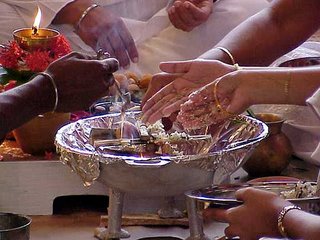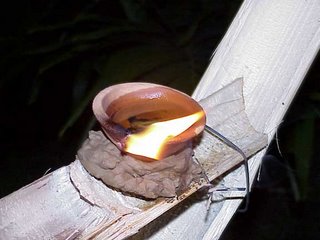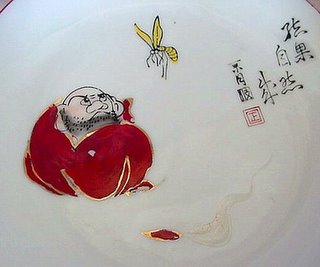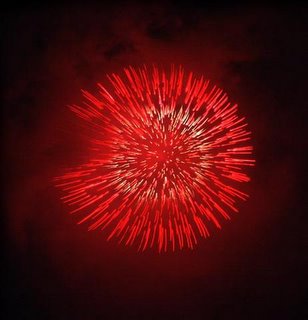:::::::::::::::::::::::::::::::::::::::::::::::::::::::::::::::::::::::::::::::::::::::::::::::::::::
Dogwood (Cornus family)
***** Location: Japan, North America, Europa
***** Season: Late Summer and others, see below
***** Category: Plant
*****************************
Explanation
Photo © Gabi Greve, 2010
yamabooshi (yamaboshi) no hana 山法師のはな
Literally: Mountain priest
yamabooshi 山帽子 "Mountain Hat" (a play with pronounciation of kanji)
yamaguwa 山桑 "Mountain Mulberry"
The cornus family of plants comes in many variations and therefore different seasons as a kigo in other areas than Japan. See below.
In Japan, the flowers on the twigs are all looking up and it seems like snow on the branches. They grow on Honshu, Kyushu and Shikoku in the mountainous areas.
Gabi Greve
Yamabooshi 山法師
Flowering from May to June. Yamabooshi means "mountain priest", since the round part in the middle of the flower reminds us of the shaven head of a priest and the four white petals are like the scarf worn by monk-soldiers on the famous temple Mt. Hieizan, Kyoto. The most famous of these mountain priest-warriours is maybe the brave Benkei, the companion of Yoshitsune. But that is a different story.
Hooshi (hoshi 法師) in the beginning was a term for a high-ranking priest who could explain the Buddhist teaching, but later the meaning became more wide to include any priest or monk, especially the ones from Hiezan, which is the meaning of "mountain" YAMA in the name of this flower.
In Autumn the red berries look almost like strawberries.
http://www.hana300.com/yamabo.html
Many Pictures:
http://www.hana300.com/yamabo1.html
:::::::::::::::::::::::::::::::::::::::::::::::::::::::::::::::::::::::::::::::::::::::::::::::::::::
Dogwood Promenade in Hiroshima
We started the Dogwood Initiative 2001 in an effort to emulate the exchange of cherry blossom and dogwood trees that symbolized the friendship between the US and Japan at the beginning of the 20th century. We will create a beautiful dogwood promenade along the banks of the Kyobashi-gawa River as a living testament to the friendship between the US and Japan, representing for centuries to come the goodwill of the people of the US toward the people of Hiroshima.
source : www.city.hiroshima.lg.jp
:::::::::::::::::::::::::::::::::::::::::::::::::::::::::::::::::::::::::::::::::::::::::::::::::::::
Cornus kousa, Japanischer Blütenhartriegel, Kousa Dogwoods
There is also a Chinese version.
http://www.gartendatenbank.de/pflanzen/cornus/a004.htm
Yamabooshi Plants in Japan
http://www.huis.hiroshima-u.ac.jp/~nomura/Y/ja/yamabs2.html
mizuki みずき【水木】dogwood, Hartriegel, Hornstrauch
Swida controversa, Cornus controversa
hanamizuki, hana mizuki 花水木 dogwood blossoms
They bring a light and bright feeling to the haiku.
. . . CLICK here for Photos !
hanamizuki were introduced to Japan as a return-present, when Japan sent the cherry trees to Washington for the Potomac walk. So they are a symbol of the friendship of both countries.
As kigo, they are therefore rather new.
.................................................................................
kigo for mid-spring
Tosa mizuki 土佐水木 (とさみずき) winter hazel "from Tosa"
..... Tosa mizuki 蝋弁花(とさみずき)
Hyuuga mizuki 日向水木(ひゅうがみずき)"from Hyuga"
shiromura しろむら
Corylopsis spicata
:::::::::::::::::::::::::::::::::::::::::::::::::::::::::::::::::::::::::::::::::::::::::::::::::::::
kigo for early spring
sanshuu no hana 三茱臾の花 (さんしゅゆのはな) Japanese cornel
Japanese cornelian cherry or Cornelian cherries
..... haru koganebana 春黄金花(はるこがねばな)"yellow spring flowers"
Cornus officinalis

*****************************
Worldwide use
North America
http://www.duke.edu/~cwcook/trees/cofl.html
Cornus florida
kigo for spring
Flowering dogwood blooms in the spring, as its new leaves are unfolding, and usually remains showy for 2-3 weeks.
Flowering dogwood occurs naturally in the eastern United States from Massachusetts to Ontario and Michigan, south to eastern Texas and Mexico, and east to central Florida. It grows in a variety of habitats throughout its range, but generally occurs on fertile, well drained but moist sites. Flowering dogwood is usually an understory component in mixed hardwood forests or at the edges of pine forests.
http://www.floridata.com/ref/C/cornus_f.cfm
xxxxxxxxxxxxxxxxxxxxxxxxxxxxx
The bright red fruits ripen in September and are eaten by birds.
You can tell a dogwood by its bark...
Look at more pictures here:
http://www.duke.edu/~cwcook/trees/cofl.html
and in this Plant Gallery
http://www.noble.org/imagegallery/Woodhtml/wood1-66/W261.JPG
http://www.noble.org/imagegallery/Woodhtml/FloweringDogwood.html
:::::::::::::::::::::::::::::::::::::::::::::::::::::::::::::::::::::::::::::::::::::::::::::::::::::
The flowering dogwood is the state tree and flower of Virginia, and the state tree of North Carolina, both southern states in the US. The dogwood flowers in mid April thru May in most Southern States.
The inflorescence ("flower") of the Pacific dogwood (Cornus nuttallii) is the official flower of the province of British Columbia.
"Dogwood, common name for a family of flowering plants distributed mainly in the temperate areas of the northern hemisphere, with a few species occurring in tropical South America and Africa. Of the 14 genera in the family, only the dogwood genus is native to North America. Members of the family are mostly trees or shrubs with simple, opposite leaves. Well-known exceptions, however, are the bunch berry, a perennial herb; and the pagoda dogwood, which has alternate leaves. Dogwood flowers are small and are produced in branched terminal clusters that are sometimes surrounded by showy white bracts. Thus, the so-called petals of the familiar flowering dogwood are actually bracts."
http://www.bright.net/~dogwood/article.html
xxxxxxxxxxxxxxxxxxxxxxxxxxxxx
Many southern states have 'Dogwood Festivals'.
http://www.dogwoodfestival.org/index.html
2004 Atlanta Dogwood Festival
http://www.dogwood.org/
:::::::::::::::::::::::::::::::::::::::::::::::::::::::::::::::::::::::::::::::::::::::::::::::::::::
Ireland (and the UK) :
Red Barked Dogwood 'Cornus alba Sibirica'
Cornus sanguinea "blood-red"
.. .. .. .. .. .. .. .. .. .. .. Both are kigo for winter
The variety used in Europe is a shrub up to 1.50, possibly 2 metres tall at most. It is often planted as a hedge, or a copse along a roadside, and for most of the year is just plain shrubbery.
Once it has lost its leaves, it comes into its own, as its branches, all growing straight upwards and now becoming visible, are either red or brilliant yellow, and thus lend real beauty to the roadsides or hedgerows in winter.
Isabelle Prondzynski
Red Barked Dogwood 'Cornus alba Sibirica'
. . . CLICK here for Photos !
Small, creamy-white flowers in May and June and oval, dark green leaves, which redden in autumn and fall to reveal bright, coral-red stems. This red-barked dogwood is perfect for a waterside planting. To achieve the best stem colour chose a sunny site and hard prune the stems to within 5-7cm (2-3in) from the ground each March.
http://www.crocus.co.uk/search/pl/?ContentType=Plant_Card&ClassID=963
Cornus sanguinea
Sanguinea means "blood-red" referring to the coloured stems of this species which is a native of England, Ireland and east to Russia and western Asia. It is found in scrubs and hedges, often on chalk.
The winter shoots of this upright, deciduous shrub are reddish-green, sometimes completely green and different cultivars are valued for the varied colours of the winter shoots.
The leaves are mid-green, ovate and up to 10cm (4in) long, turning red in autumn. White flowers are borne in May or June in dense, flat cymes, up to 5cm (2in) across.
The fruit are spherical, matt blue-black, bitter and inedible. Once used as a source of lamp oil, their oily nature led to the dogwood being called the “wax tree”.
It was also called the “dog-tree” and “dogberry” because its fruit was considered unfit even for dogs.
Shakespeare gave the name Dogberry to a character in Much Ado About Nothing, indicating the prominence of the dogwood in British life at the time
http://www.rhs.org.uk/gardens/rosemoor/archive/rosemoorpom03dec.asp
xxxxxxxxxxxxxxxxxxxxxxxxxxxx
Dogwood Plants all over the World
http://tinyurl.com/4w2uq
*****************************
Things found on the way
The archives of 'Dogwood Blossoms' an electronic journal of haiku,
created by Gary Warner
reference : dogwood blossoms
xxxxxxxxxxxxxxxxxxxxxxxxxxxxx
A dance of the Mountain Priests, Yamabooshi Odori
Photos : 山法師踊り
*****************************
HAIKU
under the
flowering dogwood-
a chance meeting
Kate Steere
xxxxxxxxxxxxxxxxxxxxxxxxxxxxx
beautiful dogwood
with soft flower buds forming
lovely thoughts arouse
aparajita
http://www.loveblender.com/blend/wv.cgi?id=2003.03.30.17.44.29959
xxxxxxxxxxxxxxxxxxxxxxxxxxxxx
January sun.
dogwood tree flaming
with finches
Zhanna P. Rader
(Dragonfly, vol. 14, #7, summer 1987)
:::::::::::::::::::::::::::::::::::::::::::::::::::::::::::::::::::::::::::::::::::::::::::::::::::::
Though the sun bears down
the dogwoods among the pines
are turning red
Mark Snyder
WKD Facebook, August 2009
*****************************
Related words
***** sanshuu no mi 山茱萸の実 さんしゅゆのみ cornus fruit
Cornus officinalis
aki sango 秋珊瑚(あきさんご) "autumn corals"
kigo for early autumn
***** mizuki no mi 水木の実 みずきのみ dogwood fruit, dogberry
..... hashika no ki 麻疹木(はしかのき)
tamamizuki, tama mizuki 玉水木 (たまみずき) Ilex micrococca
kigo for late autumn
::::::::::::::::::::::::::::::::::::::::::::::::::::::::::::::::::::::::::
***** Cornus florida
kigo for spring in North America
***** Red Barked Dogwood 'Cornus alba Sibirica'
***** Cornus sanguinea "blood-red"
Both are kigo for winter in Europe
::::::::::::::::::::::::::::::::::::::::::::::::::::::::::::::::::::::::::
***** doogwood winter, blackberry winter
kigo for spring
a term used by Southerners to describe a period of cold chilly weather that coincides with the blooming of the local dogwoods.
Typically the treess bloom sometime between mid-April and mid-May (depending on the weather variations of the season) and such a cold spell is often the last winter-like weather of the season.
http://davesgarden.com/terms/go/1845/
blackberry winter: Grandmother's tears in her garden
One-line haiku by Chibi (Dennis Holmes)
About Japanese kigo for periods of cold weather in late spring
A cold spell and chil on flowers, especially the Cherry blossoms, is called " . hanabie ." flowers getting cold (花冷え).
Tsuyubie (梅雨冷え) means a cold spell during the . rainy season . , which is a kigo for Summer.
Another way to express the late cold is the use of various forms of . frost . , like parting frost, late frost and so on, as described as the kigo for late spring.
Etsuko Yanagibori
:::::::::::::::::::::::::::::::::::::::::::::::::::::::::::::::::::::::::::::::::::::::::::::::::::::
the corner newsstand
pointing at a sunday paper
with his dogwood cane
Jimmy ThePeach
Joys of Japan, February 2012
dogwoods disappear
trapped in a forest
without spring
- Shared by Jimmy ThePeach
Joys of Japan, March 2012
quote
It’s spring again and the flowers are blooming. But one important harbinger of spring is increasingly absent from our Virginia woodlands — the flowering dogwood (Cornus florida). These beautiful native trees are succumbing to the dogwood anthracnose fungus (Discula destructiva), a non-native fungus that has killed over 95 percent of the dogwoods in some areas.
While the loss of the dogwood’s delicate spring blooms and deep purple fall foliage is upsetting, the loss of ecological function is cause for serious concern. Dogwoods are an important food source for wildlife and a significant component of the calcium cycle in eastern forests.
Virginia Department of Forestry
source : www.fairfaxcounty.go
:::::::::::::::::::::::::::::::::::::::::::::::::::::::::::::::::::::::::::::::::::::::::::::::::::::

early May
a dogwood blossom
on a manhole cover
- Shared by Gennady Nov
Joys of Japan, March 2012
. Manholes with Daruma だるま模様のマンホール .
:::::::::::::::::::::::::::::::::::::::::::::::::::::::::::::::::::::::::::::::::::::::::::::::::::::
. Trees blossoming in summer .
[ . BACK to DARUMA MUSEUM TOP . ]
[ . BACK to WORLDKIGO . TOP . ]
:::::::::::::::::::::::::::::::::::::::::::::::::::::::::::::::::::::::::::::::::::::::::::::::::::::























